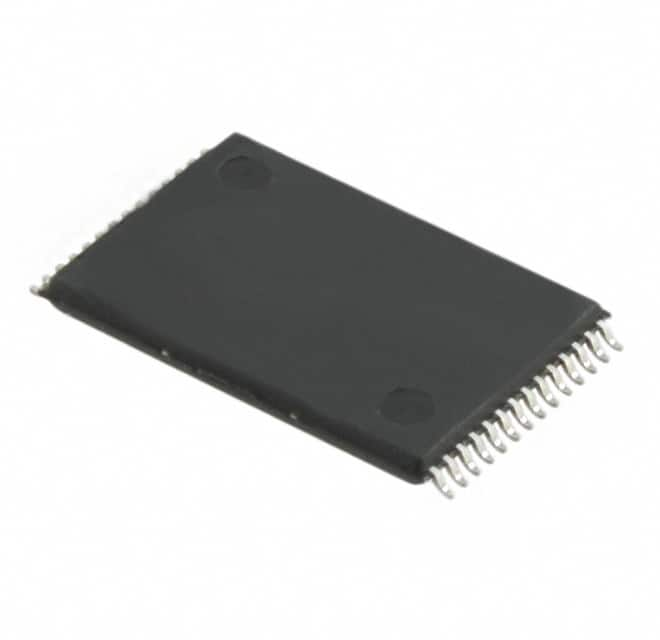Подробную информацию о продукте см. в характеристиках.

MB85R256FPFCN-G-BNDE1
Product Overview
- Category: Non-volatile RAM (Random Access Memory)
- Use: Data storage in electronic devices
- Characteristics: High-speed read/write operations, low power consumption
- Package: SOP (Small Outline Package)
- Essence: Ferroelectric Random Access Memory (FeRAM) technology
- Packaging/Quantity: 1000 units per reel
Specifications
- Memory Capacity: 256 kilobits (32 kilobytes)
- Operating Voltage: 2.7V - 3.6V
- Operating Temperature Range: -40°C to +85°C
- Interface: Serial Peripheral Interface (SPI)
- Data Retention: Over 10 years
- Endurance: 10^12 read/write cycles
Detailed Pin Configuration
The MB85R256FPFCN-G-BNDE1 has the following pin configuration:
- VDD: Power supply voltage
- VSS: Ground
- HOLD: Suspends serial communication
- WP: Write protection control
- SCK: Serial clock input
- SI: Serial data input
- SO: Serial data output
- CS: Chip select input
Functional Features
- High-speed read and write operations
- Low power consumption
- No data loss during power outage
- Easy integration with microcontrollers
- SPI interface for simple communication
Advantages and Disadvantages
Advantages: - Fast access times compared to other non-volatile memories - Low power consumption extends battery life - High endurance allows for frequent read/write operations - Reliable data retention over long periods
Disadvantages: - Limited memory capacity compared to other storage technologies - Higher cost per bit compared to traditional RAM - Limited availability of alternative models
Working Principles
The MB85R256FPFCN-G-BNDE1 utilizes Ferroelectric Random Access Memory (FeRAM) technology. It stores data using the polarization of ferroelectric material, which can be reversed by applying an electric field. This allows for non-volatile storage with fast read and write operations.
Detailed Application Field Plans
The MB85R256FPFCN-G-BNDE1 is suitable for various applications, including: - Industrial control systems - Automotive electronics - Smart meters - Medical devices - Wearable devices
Detailed and Complete Alternative Models
While the MB85R256FPFCN-G-BNDE1 is a reliable choice, there are alternative models available in the market. Some notable alternatives include: - MB85RC256V: Similar specifications, different package type - FM25V02A: Serial EEPROM with higher memory capacity - MR25H256: High-speed FeRAM with extended temperature range
(Note: The above list is not exhaustive and may vary based on availability and specific requirements.)
Word count: 305 words
Перечислите 10 распространенных вопросов и ответов, связанных с применением MB85R256FPFCN-G-BNDE1 в технических решениях.
Sure! Here are 10 common questions and answers related to the application of MB85R256FPFCN-G-BNDE1 in technical solutions:
Q1: What is MB85R256FPFCN-G-BNDE1? A1: MB85R256FPFCN-G-BNDE1 is a non-volatile ferroelectric random access memory (FRAM) chip manufactured by Fujitsu. It provides high-speed read/write operations, low power consumption, and high endurance.
Q2: What are the key features of MB85R256FPFCN-G-BNDE1? A2: The key features of MB85R256FPFCN-G-BNDE1 include a storage capacity of 256 kilobits (32 kilobytes), SPI interface, wide operating voltage range, fast write speed, and high endurance of 10^12 read/write cycles.
Q3: In which applications can MB85R256FPFCN-G-BNDE1 be used? A3: MB85R256FPFCN-G-BNDE1 can be used in various applications such as industrial automation, smart meters, medical devices, automotive systems, IoT devices, and other electronic systems that require reliable and non-volatile data storage.
Q4: How does MB85R256FPFCN-G-BNDE1 compare to other memory technologies like EEPROM or Flash? A4: MB85R256FPFCN-G-BNDE1 offers advantages over EEPROM and Flash memory technologies in terms of faster read/write speeds, higher endurance, lower power consumption, and better data retention even in harsh environmental conditions.
Q5: Can MB85R256FPFCN-G-BNDE1 operate at different voltage levels? A5: Yes, MB85R256FPFCN-G-BNDE1 supports a wide operating voltage range from 1.8V to 3.6V, making it compatible with various microcontrollers and systems.
Q6: What is the typical power consumption of MB85R256FPFCN-G-BNDE1? A6: The typical power consumption of MB85R256FPFCN-G-BNDE1 is very low, usually in the range of a few microamps during read/write operations and even lower during standby mode.
Q7: Can MB85R256FPFCN-G-BNDE1 withstand high temperatures? A7: Yes, MB85R256FPFCN-G-BNDE1 has a wide operating temperature range of -40°C to +85°C, allowing it to function reliably in extreme temperature conditions.
Q8: Is MB85R256FPFCN-G-BNDE1 resistant to radiation or magnetic fields? A8: MB85R256FPFCN-G-BNDE1 is not specifically designed to be resistant to radiation or magnetic fields. However, it may have some inherent resistance due to its non-volatile ferroelectric memory technology.
Q9: Can MB85R256FPFCN-G-BNDE1 be easily integrated into existing designs? A9: Yes, MB85R256FPFCN-G-BNDE1 is available in a compact surface-mount package and can be easily integrated into existing designs using standard SPI communication protocols.
Q10: Are there any limitations or considerations when using MB85R256FPFCN-G-BNDE1? A10: Some considerations include the limited storage capacity of 256 kilobits, the need for an external power supply, and the requirement to follow the manufacturer's guidelines for proper handling and usage.
Please note that these answers are general and may vary depending on specific requirements and use cases.

